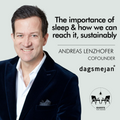Fashion is so much more than the runway, the bright and flashy stores, the immaculately dressed models, or the infinite color variations of the same t-shirt.
Your wardrobe is your message.
And, the clothes you wear communicate that message.
The trends that fill the runways and stores are inextricably linked to that world too. Much like music, art, and films - the fashion industry is impacted by current events and Zeitgeists. Whether that be the current tendency to a more sustainable lifestyle due to the climate crisis, or the resurgence of nostalgic fashion in search of “the good old days,” fashion is woven into history. And, in return, history is woven into every garment’s stitch and seam.
Indeed, from a retrospective stance, you’d be surprised to learn how much history is sewn into the lining of your everyday sweater. And it’s not only the innovations of the Industrial Revolution and the mechanization of production that made waves in the fashion industry. Pandemics, wartime, and revolutionary ideals created their own ripples too.
PANDEMICS
For centuries, pandemics and outbreaks of diseases have influenced fashion and accessories. Living in the age of COVID-19, we are becoming well accustomed to never leaving home without a mask.
But this is not the first time in history masks have been accepted as a staple accessory, and it may not be the last either…
SPANISH FLU
The 1918 Spanish flu pandemic infected an estimated 500 million people worldwide in four successive waves. Up to 50 million people were killed, making it one of the deadliest pandemics in history.
Similar to the social distancing regulations that we currently experience, government officials imposed quarantines. Measures were taken, such as the ban of shaking hands and shutting down of schools, churches, and other public places. People were advised to stay indoors, but when they left the house they were required to wear face masks... Sound familiar?
But the standard of PPE was nowhere near to what we have available today.
Unlike our advanced FFP2, N95 masks and filtering facepiece respirators (FFR), masks were made of mere gauze. In the hopes of encouraging people to wear masks, there were no specifications of what could be used, however, newspapers did carry out instructions to show people how to fashion the masks themselves. Some masks were made and distributed by Red Cross volunteers too.
While intended to reduce the spread of the flu, masks made from such materials could not have been effective even if worn correctly - which was often not the case. Many people refused to wear the hot and stuffy masks and others poked holes through them to smoke cigarettes- rendering them entirely ineffectual and posing even further health risks.
An American Red Cross worker wears a gauze mask during the Spanish Flu pandemic. Paul Thompson for Getty Images.
An American Red Cross worker wears a gauze mask during the Spanish Flu pandemic. Paul Thompson for Getty Images.
Unlike our advanced FFP2, N95 masks and filtering facepiece respirators (FFR), masks were made of mere gauze. In the hopes of encouraging people to wear masks, there were no specifications of what could be used, however, newspapers did carry out instructions to show people how to fashion the masks themselves. Some masks were made and distributed by Red Cross volunteers too.
While intended to reduce the spread of the flu, masks made from such materials could not have been effective even if worn correctly - which was often not the case. Many people refused to wear the hot and stuffy masks and others poked holes through them to smoke cigarettes- rendering them entirely ineffectual and posing even further health risks.
Unlike our advanced FFP2, N95 masks and filtering facepiece respirators (FFR), masks were made of mere gauze. In the hopes of encouraging people to wear masks, there were no specifications of what could be used, however, newspapers did carry out instructions to show people how to fashion the masks themselves. Some masks were made and distributed by Red Cross volunteers too.
An American Red Cross worker wears a gauze mask during the Spanish Flu pandemic. Paul Thompson for Getty Images.
While intended to reduce the spread of the flu, masks made from such materials could not have been effective even if worn correctly - which was often not the case. Many people refused to wear the hot and stuffy masks and others poked holes through them to smoke cigarettes- rendering them entirely ineffectual and posing even further health risks.
BUBONIC PLAGUE
17th century Europe was struck hard by the bubonic plague. Otherwise known as the black death, this disease is caused by fleas that are infected by rats carrying the bacteria.
A Physicians uniform during the plague.
Superstock: Dr. Schnabel of Rome, a Plague Doctor in 1656 Paul Fuerst Copper engraving (Stock Photo 1443-1112)
The physicians - also known as plague doctors - who tended to plague victims often covered themselves with a long black cloak and wore a mask made recognizable by a bird-like beak. These beaked masks were a way of keeping a distance from infected patients while examining them. It also worked as a primitive gas mark, protecting its wearers from foul odors associated with the plague, through the use of herbs at the end of the beak, perfuming the air breathed in.
This strange costume has been credited to Charles de Lorme, a physician who cared for European royals during the 17th century. His description of the outfit details a scented wax-covered coat, breeches and boots, a tucked-in shirt, a wide-brimmed hat, and goat leather gloves. Accompanying the beaked mask, a wooden cane, which allowed plague doctors to poke patients, has become symbolic as part of the ensemble.
While this functional look was sported by the majority of plague doctors throughout Europe, it was especially iconic in Italy. The “plague doctor” became a staple character and costume in Italian commedia dell’arte theatre and carnival celebrations. Today, the peculiar plague doctor costume is still popular.
SMALLPOX
Smallpox infected many people throughout the 1800s and often left marks on its victims’ faces. As a form of coverage, a mixture of vinegar and lead was used to create a very heavy (and deadly) white face paint. This concoction known as the “Venetian ceruse” was made famous by Queen Elizabeth I of Britain. Although having recovered, her affliction with the illness in 1562 rendered her once famously fair skin full of scars and she resorted to this form of makeup to keep up the ‘Mask of Youth’.
Queen Elizabeth I
TUBERCULOSIS
Who would have thought that being desperately ill would be considered fashionable? Well, for Victorian fashion, it was exactly that. Behind aligning to social conventions of beauty, there was a deadly secret.
In the late 18th- to early 19th century, a disease now recognized as tuberculosis became rampant. People of the time equated the slow-killing disease, which they called “consumption”, to the excessive lifestyle of the upper class - too much drinking and partying.
Image via WikiCommons
The era romanticized the symptoms of the illness and their effects - aligning them to the existing ideals of beauty, emulating them in fashion. Thinness, ghostly pallor, rosy cheeks, and red lips were some of these desired effects.
For those not infected with the illness, the use of makeup to mimic the look of reddened lips, pink cheeks, and lightened skin was coupled with dresses to recreate an appearance of gaunt thinness and a slumped posture. This aestheticization of the disease resulted in the creation of long high-waisted dresses featuring voluminous skirts and pointed corsets, as well as low backs and necklines to display bony collarbones.
WAR TIME
WORLD WAR I
World War I was the first act of war on a global scale and the impacts of the event bled into far more than just the lives of the soldiers and their families. At the time, women in society were mere housewives and nurses. However, the war forced women into the labour force - with men on the frontlines - and this called for a readjustment of the normal clothing that women were allowed to wear.
Coco Chanel in trousers and her classic sailor striped shirt.
World War I was the first act of war on a global scale and the impacts of the event bled into far more than just the lives of the soldiers and their families. At the time, women in society were mere housewives and nurses. However, the war forced women into the labour force - with men on the frontlines - and this called for a readjustment of the normal clothing that women were allowed to wear. The narrow fit of the hobble skirt was replaced by a shorter, fuller skirt for a greater range of motion. And, more significantly, women began wearing trousers - a practical and necessary wardrobe adjustment for the female working force. Whilst not yet a wardrobe norm, this became one of the first times that women were allowed to wear pants, albeit as a practical wardrobe necessity.
Coco Chanel in trousers and her classic sailor striped shirt
The narrow fit of the hobble skirt was replaced by a shorter, fuller skirt for a greater range of motion. And, more significantly, women began wearing trousers - a practical and necessary wardrobe adjustment for the female working force. Whilst not yet a wardrobe norm, this became one of the first times that women were allowed to wear pants, albeit as a practical wardrobe necessity.
With the bread-winners of families now fighting in the war, and most of the government budget going towards the support of the war effort, incomes shrank. This made custom tailoring unaffordable, and ready-to-wear clothes became popular. This meant that collections could be created at a greater scale than before, with standardized sizes which allowed people to shop at stores. This was the first time that nested patterns and size grading was seen in clothing production - an element of the process that is crucial to this day.
With the bread-winners of families now fighting in the war, and most of the government budget going towards the support of the war effort, incomes shrank. This made custom tailoring unaffordable, and ready-to-wear clothes became popular. This meant that collections could be created at a greater scale than before, with standardized sizes which allowed people to shop at stores. This was the first time that nested patterns and size grading was seen in clothing production - an element of the process that is crucial to this day.







